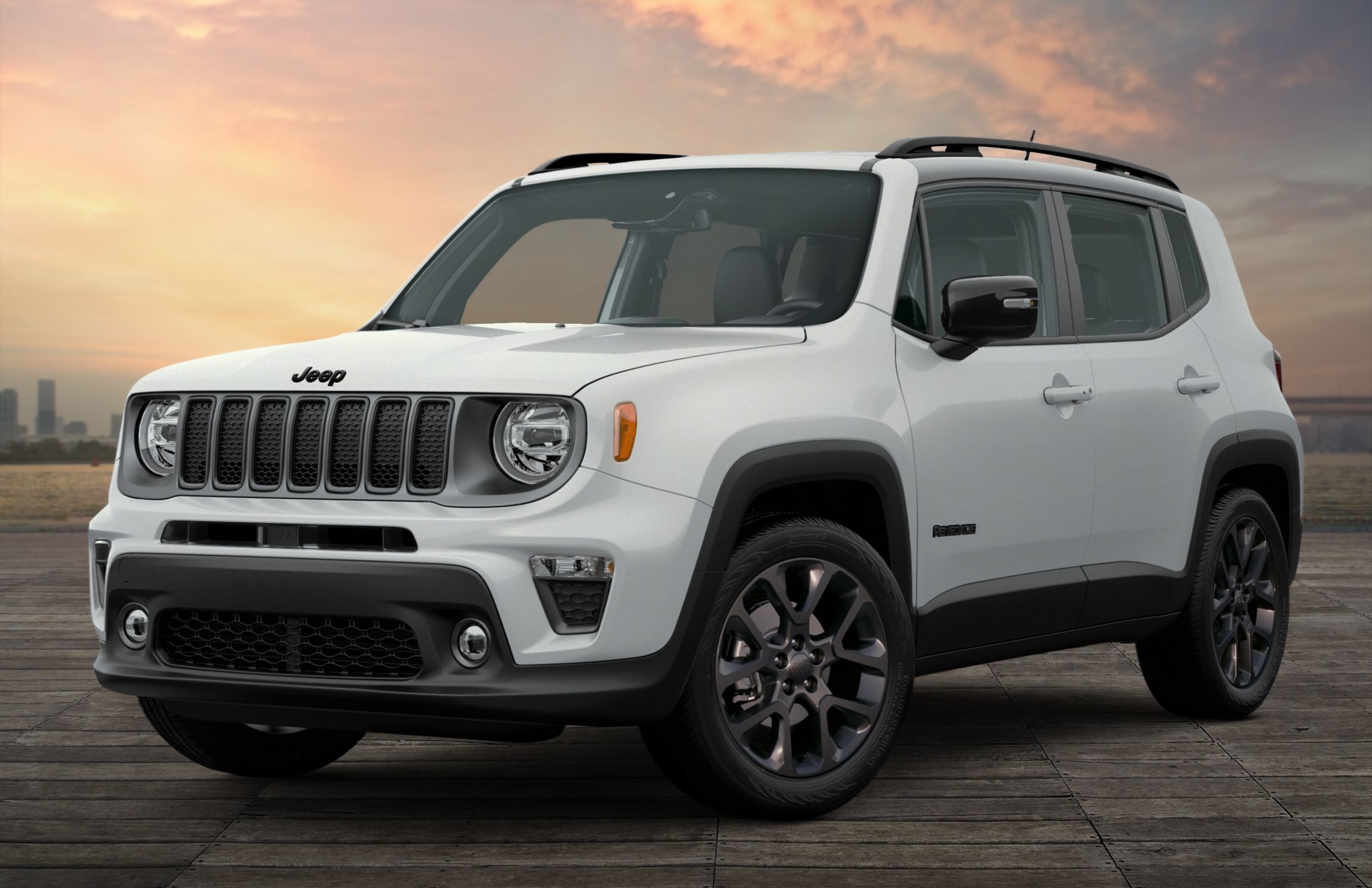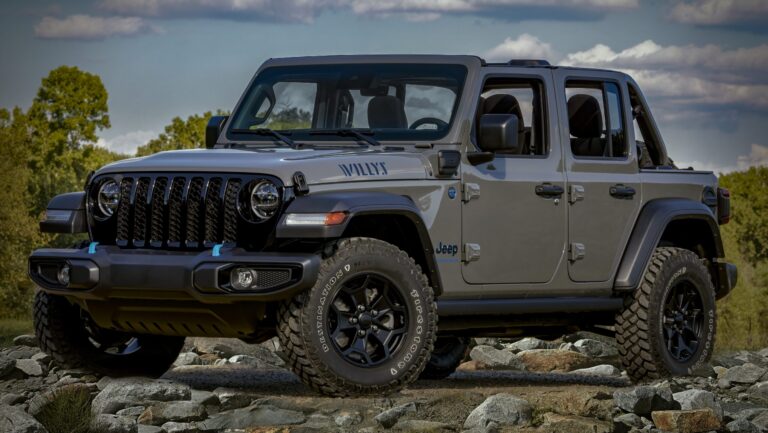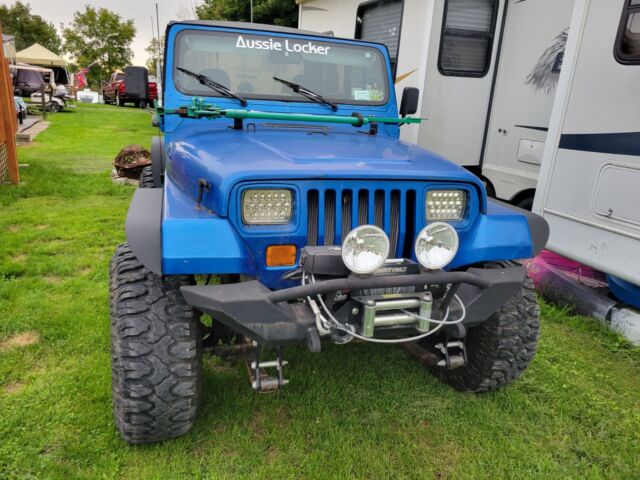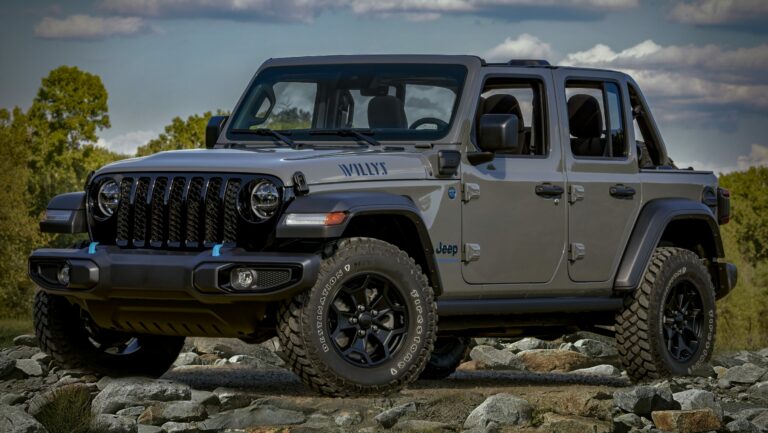Jeep CJ7 Frame For Sale: Your Ultimate Guide to Finding the Perfect Foundation
Jeep CJ7 Frame For Sale: Your Ultimate Guide to Finding the Perfect Foundation jeeps.truckstrend.com
The Jeep CJ7 holds an iconic status in the automotive world, revered by off-road enthusiasts and classic vehicle collectors alike. Known for its rugged simplicity, go-anywhere capability, and timeless design, the CJ7 remains a highly sought-after platform for restoration projects, custom builds, and dedicated trail rigs. At the heart of every CJ7 lies its robust ladder frame, the very backbone that defines its legendary durability and off-road prowess. When tackling a comprehensive restoration, repairing significant damage, or embarking on a custom build, the quest for a "Jeep CJ7 frame for sale" often becomes the most critical initial step. This article serves as your definitive guide, exploring everything you need to know about acquiring this essential component for your CJ7 dream.
Why Buy a CJ7 Frame? The Foundation of Your Project
Jeep CJ7 Frame For Sale: Your Ultimate Guide to Finding the Perfect Foundation
The decision to purchase a standalone CJ7 frame typically stems from several common scenarios, each highlighting the frame’s foundational importance:
- Restoration Projects: Many vintage CJ7s suffer from severe frame rust, especially in areas prone to moisture and road salt accumulation like body mounts, spring perches, and crossmembers. A rusted or structurally compromised frame can be a death knell for a restoration, making a replacement frame an absolute necessity to ensure safety and longevity.
- Repairing Accident or Trail Damage: While CJ7 frames are incredibly strong, extreme off-road abuse or significant accidents can bend, crack, or twist the chassis beyond repair. A new or used straight frame provides a fresh start for vehicles with such damage.
- Custom Builds and Engine Swaps: For enthusiasts looking to create a highly customized CJ7, perhaps with a modern V8 engine swap (like an LS), stretched wheelbase, or heavy-duty suspension, starting with a bare frame allows for easier modification and reinforcement. It provides a clean slate to build a vehicle tailored precisely to specific performance and aesthetic goals.
- Building from Scratch: Some ambitious individuals choose to "build" a CJ7 from the ground up, sourcing all components individually. In this case, the frame is the first and most vital piece of the puzzle, providing the structure upon which the entire vehicle will be assembled.
In essence, whether you’re bringing a classic back to life, enhancing its capabilities, or starting anew, the frame dictates the integrity, handling, and safety of your finished Jeep.

Types of CJ7 Frames Available on the Market
When you search for a "Jeep CJ7 frame for sale," you’ll encounter a few distinct categories, each with its own set of advantages and disadvantages:
- Used/Original Frames:
- Description: These are frames salvaged from existing CJ7 vehicles. They can range from severely rusted "parts" frames to remarkably well-preserved examples, often found in dry, arid climates.
- Pros: Authenticity for purist restorations, potentially lower cost, and readily available from various sources.
- Cons: The primary challenge is condition. Rust, previous repairs (good or bad), and potential bending are common issues. Thorough inspection is crucial.
- Aftermarket/New Reproduction Frames:

- Description: Several reputable manufacturers produce brand-new CJ7 frames. These are often built to original specifications, though some may incorporate minor improvements (e.g., thicker steel in critical areas, better weld quality).
- Pros: No rust, guaranteed straightness, often stronger than original frames, and a clean slate for painting/coating. Eliminates the guesswork of a used frame’s hidden flaws.
- Cons: Significantly higher cost than most used frames. May not be considered "original" for concourse-level restorations.
- Rolling Chassis:
- Description: This typically includes the frame, axles, leaf springs, shocks, and sometimes the steering box, skid plate, and even a transmission/transfer case. It’s a more complete foundation.
- Pros: Saves time and effort in sourcing individual suspension and drivetrain components. Can be a cost-effective way to get many major parts at once.
- Cons: Higher purchase price due to included components. The condition of the additional components (axles, springs, etc.) can vary and may require rebuilding. More complex shipping.
What to Look For When Buying a CJ7 Frame
Acquiring a frame, especially a used one, requires a keen eye and a methodical approach. Your due diligence here will save you significant headaches and costs down the road.
- Condition is Paramount: The Rust Check: Rust is the CJ7 frame’s archenemy. Pay close attention to:
- Body Mounts: These are notorious rust traps where water and debris accumulate. Check all seven (or nine, depending on year) mounts thoroughly.
- Spring Perches: Where the leaf springs attach to the frame. Rust here compromises suspension integrity.
- Skid Plate Mounts: The area under the transmission/transfer case often traps moisture.
- Rear Crossmember: A common area for rust-through due to exposure.
- Steering Box Mount: Can crack or rust out, especially with oversized tires and heavy steering.
- General Frame Rails: Look for pitting, flaking, and soft spots. Tap the frame with a hammer to listen for solid metal versus a dull thud (indicating rust).
- Straightness: The Foundation of Handling: A bent or twisted frame will lead to alignment issues, poor handling, uneven tire wear, and even safety concerns.
- Visual Inspection: Stand at both ends of the frame and sight down the rails. Look for obvious bows, twists, or dips.
- Measurement: If possible, measure diagonally from opposing corners (e.g., front passenger side spring perch to rear driver side spring perch) and compare. They should be identical. Use a string line to check for parallelism of the frame rails.
- Level Surface: Ideally, inspect the frame on a flat, level surface.
- Previous Repairs: Look for evidence of welding or patching. While not always a deal-breaker, poor quality welds or patches can indicate underlying issues or weak points. Good, professionally done repairs are acceptable, but be cautious of "patchwork" jobs.
- Included Components: Does the frame come bare, or does it include the steering box, body mounts, spring hangers, or other components? Factor the cost and condition of these into your decision.
- VIN and Documentation: For frames with a VIN (Vehicle Identification Number), ensure it’s legible and that the seller can provide a bill of sale or title, especially if you plan to register the frame (which is required in some states for "reconstructed" vehicles). New aftermarket frames usually come with an MSO (Manufacturer’s Statement of Origin).
Where to Find a CJ7 Frame For Sale
The search for a CJ7 frame can be an adventure in itself, requiring patience and a willingness to explore various channels:
- Online Marketplaces:
- eBay, Craigslist, Facebook Marketplace: These are excellent starting points for used frames. Use specific search terms like "Jeep CJ7 frame," "CJ7 rolling chassis," or "CJ7 tub and frame." Be prepared to travel for pickup.
- Facebook Groups: Dedicated Jeep CJ groups are treasure troves of parts and information. Post a "wanted" ad, and you might be surprised by the responses.
- Specialized Jeep Parts Dealers & Salvage Yards: Companies that specialize in vintage Jeep parts often have frames on hand, though they might be pricier due to professional handling and inspection. Salvage yards (junkyards) can yield gems, but finding a good CJ7 frame is like finding a needle in a haystack.
- Aftermarket Manufacturers: For new reproduction frames, check websites of companies like Quadratec, Omix-ADA, Dynacorn, and smaller custom fabricators specializing in Jeep chassis.
- Local Jeep Clubs: Networking with local Jeep enthusiasts can lead to leads on frames from ongoing projects or parts vehicles.
- Word of Mouth: Sometimes, the best finds come from simply asking around at car shows, swap meets, or repair shops.
The Buying Process & Important Considerations
Once you’ve located a potential frame, here’s how to navigate the acquisition:
- Budgeting: Frame prices vary wildly. Factor in not just the purchase price but also potential shipping costs, any necessary repair work, and sandblasting/coating.
- Logistics: Shipping vs. Pickup: Frames are large, heavy, and awkward. Local pickup with a truck or trailer is often the most economical option. If shipping, get detailed quotes from freight companies. Be aware of liftgate service needs if you don’t have a loading dock.
- Inspection (In Person is Best): Always try to inspect the frame yourself or have a trusted expert do it. If not possible, demand an extensive photo and video tour, focusing on critical rust areas and overall straightness. Don’t be shy about asking for specific measurements.
- Negotiation: Especially for used frames, there’s often room for negotiation based on condition, urgency, and market demand.
- Legal Aspects: Understand your local Department of Motor Vehicles (DMV) rules regarding "reconstructed" or "assembled" vehicles, especially if the frame has a VIN. Some states require inspection and specific documentation. New frames often simplify this process.
Restoration & Preparation Tips
Once you have your frame, the real work begins:
- Cleaning: Thoroughly clean the frame. For used frames, media blasting (sandblasting, soda blasting, walnut shell blasting) is highly recommended to expose all rust and imperfections.
- Rust Repair & Reinforcement: Address any rust holes by cutting out the affected metal and welding in new steel. Consider reinforcing common stress points (e.g., steering box mount, spring perches) with fish plates or boxing the frame rails for added strength, especially for off-road use or engine swaps.
- Painting & Coating: Protect your frame from future rust with a durable coating. Options include epoxy primers, rust encapsulators (like POR-15), and dedicated chassis paints. Apply multiple coats for maximum protection.
- Body Mounts: Replace all body mounts with new polyurethane or rubber mounts. This is a small investment that pays huge dividends in ride quality and body integrity.
- Suspension Components: Install new leaf springs, shackles, shocks, and U-bolts.
Potential Challenges and Solutions
- Challenge: Finding a Straight, Rust-Free Used Frame: This is often the biggest hurdle.
- Solution: Expand your search radius, be patient, and be willing to pay more for a verified good condition frame. Consider new reproduction frames as a guaranteed solution.
- Challenge: High Shipping Costs: Freight for a frame can be hundreds, if not over a thousand, dollars.
- Solution: Prioritize local pickup. Look for frames within a drivable distance. Get multiple shipping quotes and inquire about commercial vs. residential delivery options.
- Challenge: Identifying Hidden Damage: What looks good on the outside might have issues internally or hidden under grime.
- Solution: Always assume the worst with used parts. Insist on comprehensive photos/videos, or ideally, inspect in person. Budget for potential repairs even on seemingly "good" frames.
- Challenge: VIN/Title Issues: If a used frame has a VIN, ensuring clear title or documentation is crucial.
- Solution: Consult your local DMV before purchase to understand requirements for registering a vehicle built on a replacement frame.
Estimated Price Guide for Jeep CJ7 Frames
Please note: Prices are highly variable based on condition, location, seller, and market demand. These are estimated ranges.
| Item Type | Description | Estimated Price Range (USD) | Notes |
| Used (Rust-Free) | Excellent structural integrity, no significant rust or physical damage. Ready for prep and paint. | $800 – $1,500 | Rare to find. Often comes from dry climates. Highly sought after.







